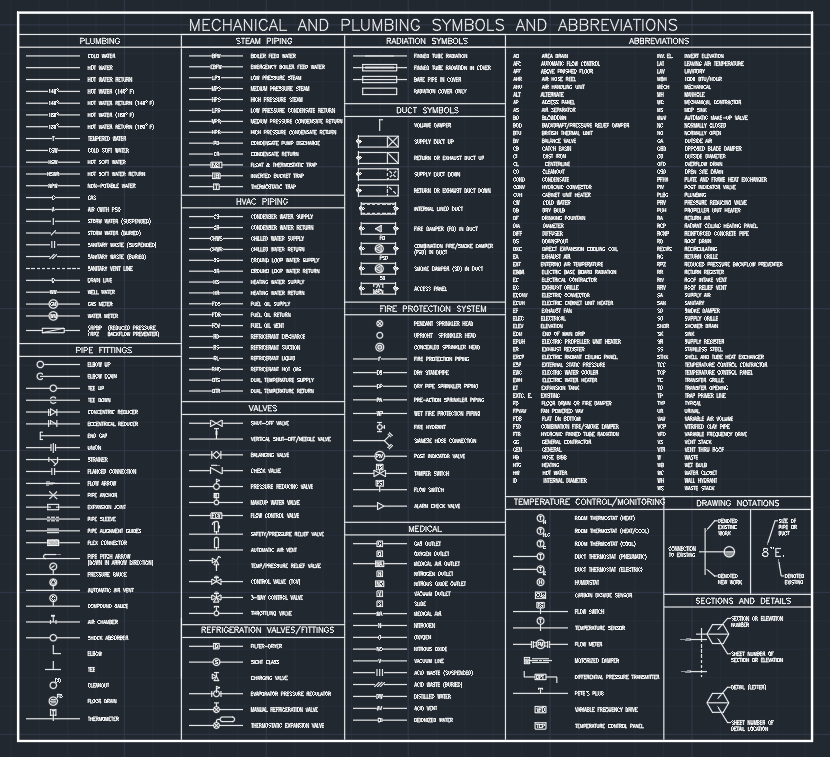Sanitary Pipe Fittings Autocad 2017

These libraries are compatible with Trimble® PipeDesigner 3D®, Release 2018 v1.20 (which can be installed only with AutoCAD®2018, AutoCAD® Architecture 2018, and AutoCAD® MEP 2018. ) Note: They will not work. PipeDesigner 3D system. This includes connection types, fitting sizes, and material specifications. All fittings for HDPE pipe meet or exceed the following specifications: ASTM F714 Standard Specification for Polyethylene (PE) Plastic Pipe (SDR-PR), based on outside diameter. D3350 Standard Specification for Polyethylene Plastic Pipe and Fittings Materials. ASTM D3035 Standard Specification for Polyethylene (PE) Plastic Pipe (SDR-PR).
Ss Sanitary Pipe Fittings
AutoCAD MEP adds pipe fittings as you draw a pipe run based on the default fittings specified in the pipe routing preferences. However, you can also add a pipe fitting manually to an existing segment or to a run.
Routing preferences specify the common fittings used for most pipe layouts. However, the default pipe parts catalog includes many other fittings you can use.
To add a pipe fitting manually
- In the Piping workspace, to select a fitting, click Home tabBuild panelPipe Fitting drop-downPipe Fitting.
- On the Properties palette, under General, click the part image next to Part.
- In the Select a Part dialog box, choose a part from the catalog.
Select a Part dialog box
Under Select Part from Catalog, the dialog box organizes pipe fittings based on material type in the US Imperial and US Metric profiles. For more information, see Pipe Parts Catalog.
- (Optional) Select Display/Hide additional part parameters to expand the contents of the parameters table.
- Under Filter by Dimensions, filter the list of parts. Note: The part catalogs and content locations determine the parts that you can select.
- Select a part size.
- On the Properties palette, under Placement, enter an elevation. Note: If you insert a fitting in an existing pipe run, you do not need to specify the elevation. The fitting inherits the elevation and system settings from that pipe run.
- Specify an insertion point in the drawing, and use the compass to specify a rotation angle.
You can use pipe curve or pipe end connectors to insert the fitting on an existing pipe object.
Related Concepts


Related Tasks
- [Voiceover] Sloping pipe has never been easy.…Luckily, in 2013, they added a few more tools that…have carried over to Revit 2014.…One of those tools is called Ignore to Slope.…Moving forward with this video, we'll create a new…PVC pipe type and add some custom fittings.…We'll then add a Sanitary fitting to the back…of the fixture.…From this fixture, we'll slope the pipe and connect…other pipes to the main trunk line.…To get started, let's find the typical lavatory plan.…It's still under HVAC, so let's make sure we move that…to Plumbing.…
Sub-Discipline, Plumbing.…Click Apply.…What we need to do now is let's load a couple fittings.…On the Insert tab, let's click Load Family.…Let's scroll down to Pipe.…Let's go to Fittings.…Let's go to PVC.…Schedule 40. Socket Type.…Let's grab every one of these fittings in this directory.…
Click Open.…On the Systems tab, let's click the Pipe button.…For Pipe Type Standard, let's click Edit Type.…Under Type Properties, let's Duplicate.…Let's simply call it PVC.…And click OK.…Under Segments and Fittings, let's click the Edit button… Selmer saxophone serial numbers.